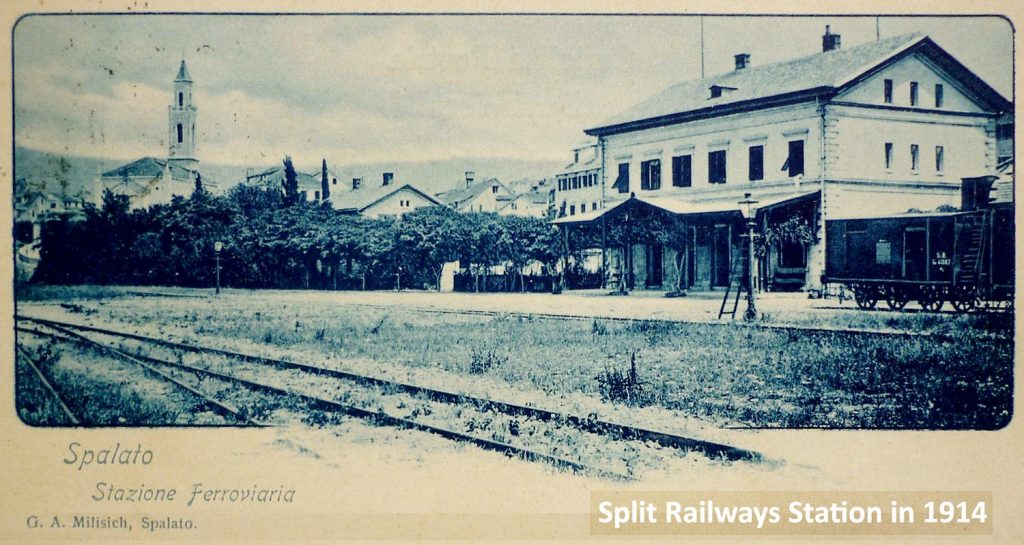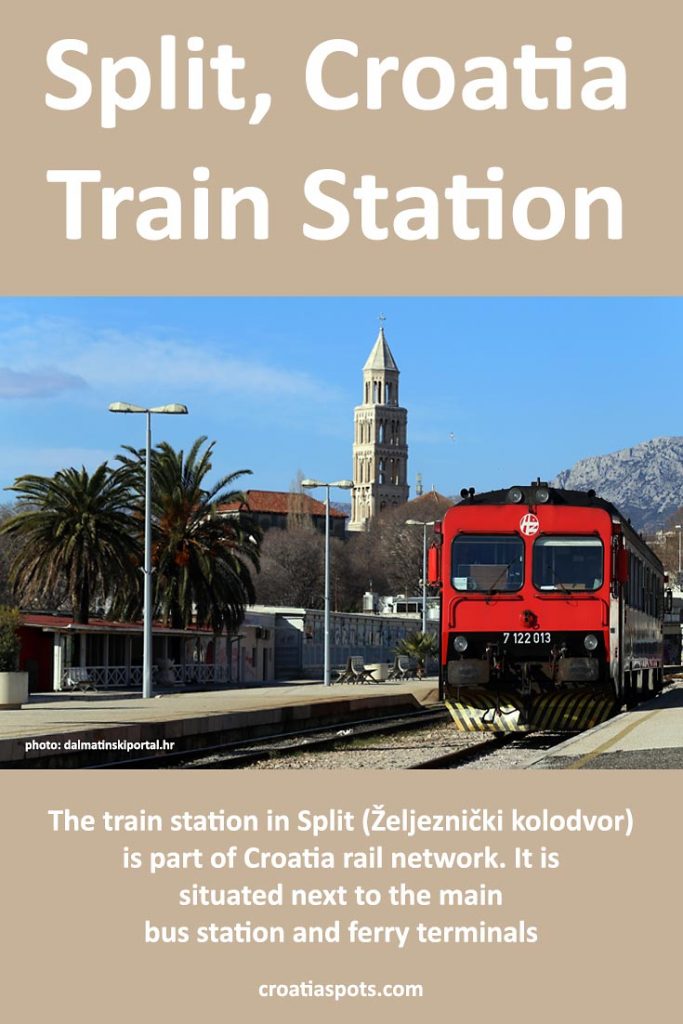The train station in Split, also known as Željeznički kolodvor Split is part of Croatia’s rail network. It is situated next to the main city’s bus station and terminal which is also very close to all ferry departure and arrival points. The station is within easy walking distance of the city centre and Diocletian’s Palace.

Table of Contents
Facilities
Within the station itself, there are just limited facilities: the ticket office and a small waiting room but as the building is adjacent to the main bus station (terminal), you can get much-needed facilities there, including luggage storage (left luggage), cafe, restaurant and basic corner shop. Parking is nearby too, just a few minute’s walk, follow the road signs. Find more details of the facilities available in the area + check how to get around the town
Check also: How to get to Split by Train
Location Map
As you can see on the above map, the station is located very close to the ferry port, city centre and bus station (see local bus map). All are grouped as a cluster within up to 15 minutes of walking distance. Check how to get here from the airport and the airport info.
GPS coordinates
43°30’18.0″N 16°26’33.7″E ; 43.505, 16.4427
Address
- Hrvatske Zeljeznice, Kolodvor Split – Obala kneza Domagoja 9, 21000, Split, Croatia
- Phone: +385 21 338 525
- book your train ticket
History of the Station

Split got its first railway connection back in 1877 when the city was connected by the first train to Siverić village in the Dalmatian hinterland (Zagora). The railway extended to Knin in 1888. In 1925 the city was connected to Zagreb via Gračac to the continental network.
In 1903, a narrow-gauge railway service was introduced between Split and Sinj. The service was discontinued in 1962. The railway station building and the waiting room (above photo) were built in 1906. Nowadays, the building is a part of the protected cultural heritage.
While researching this topic I found some statistics that I find interesting – it shows how the number of passengers using this station declined in the last 90 years. People changed to other means of transport:
- a number of passengers in 1927: 177 463
- a number of passengers in 2017: 82 490




